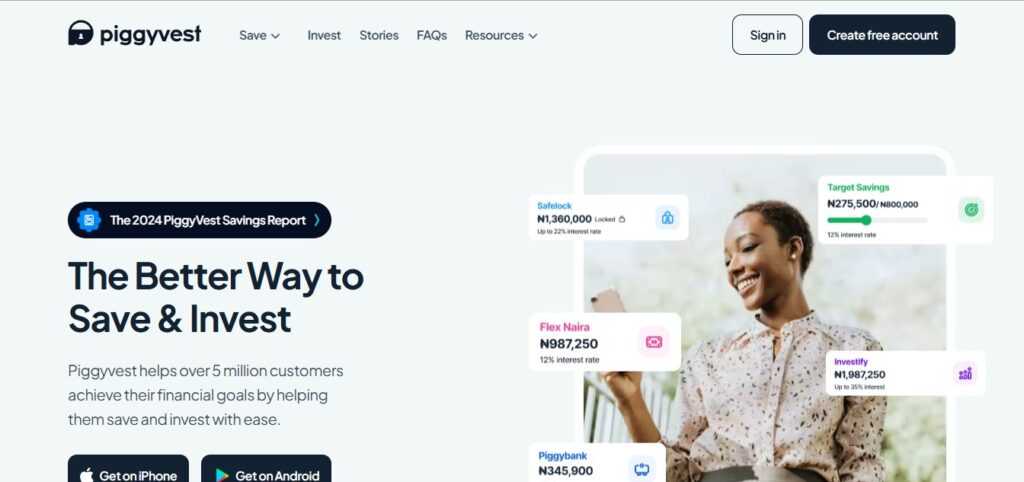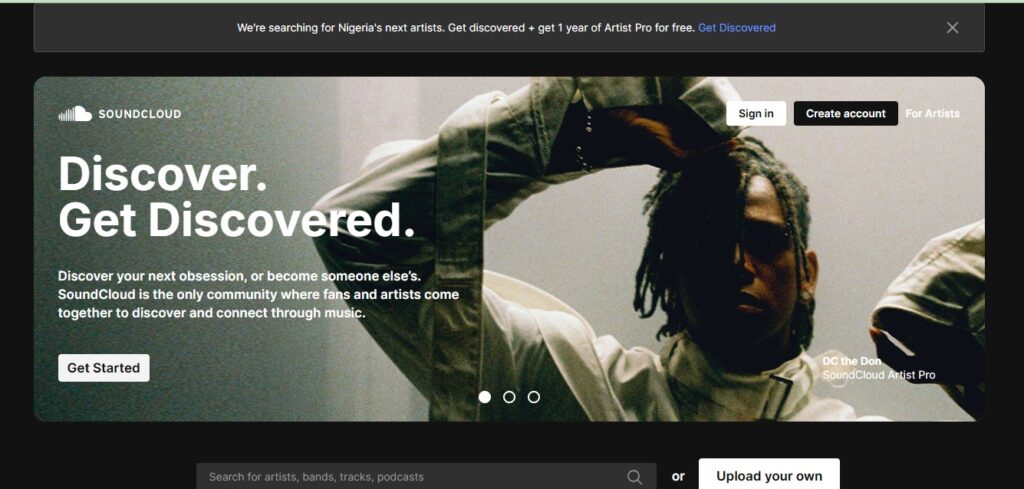Let’s be honest—“making money while you sleep” sounds like one of those internet myths that’s too good to be true. But in 2025, it’s not just possible—it’s practical.
Thanks to technology, creativity, and a shift in how we view money, generating passive income is no longer just for the rich or ultra-savvy. Whether you’re starting with $50, a phone, or just your free time, there are real ways to build income streams that keep flowing—even when you’re off the clock.
Here are 10 smart and realistic passive income ideas that anyone can start in 2025, no trust fund required:
1. Start a Digital Product Store

Let’s face it—the internet never sleeps, and neither do digital products. E-books, Canva templates, meal planners, resume kits, social media content calendars, budgeting spreadsheets… these are things people are searching for right now
The beauty? You create the product once, and it keeps selling in the background while you focus on other things—or do nothing at all.
How It Works
You start by identifying a small but hungry audience—people actively looking for simple, digital tools to solve a specific problem. Maybe it’s a bride trying to keep her wedding expenses in check. Or a freelancer who needs a social media posting calendar. Or a student who wants a digital planner to stay on top of assignments.
You don’t need to be a graphic designer. If you know your way around Canva, Google Docs, or Notion, you can whip up something valuable. Then, list your creation on marketplaces like Gumroad, Etsy, Payhip, or your own site. Once it’s up, it’s an asset—earning you money over and over again.
And guess what? You don’t need inventory, packaging, or logistics. Customers download it instantly after purchase. No stress.
Why It Works in 2025
With more people freelancing, running online businesses, or trying to stay organized, digital productivity tools are in high demand. Add to that the rise of remote work, homeschooling, and side hustling, and you’ve got a never-ending market.
Plus, consumers prefer affordable, bite-sized solutions. Instead of paying $50 for a course, they’d rather pay $5 for a worksheet that gives them exactly what they need.
Types of Digital Products You Can Create
- Budget Planners for students, newlyweds, or single moms
- Content Calendars for small business owners
- Study Guides or Cheat Sheets for specific topics (e.g., “Quick Guide to Learning Python”)
- Daily Habit Trackers and journals
- E-books on niche skills or how-to guides (e.g., “How I Grew My Instagram from 0 to 10K in 60 Days”)
- Canva Templates for social media, resumes, business cards, wedding invites, etc.
Tip: Focus on solving a specific problem. “Budgeting worksheet for freelancers” will likely sell better than just “budget planner.”
Conduct Industry Analysis in Seconds – For Free!
Discover how QuantexFlow can help you quickly analyze any industry with powerful AI-driven insights. Perfect for entrepreneurs, investors, and business analysts.
Try It Now – FreeNo credit card required. Get instant access to industry insights.
2. License Your Photos or Videos

What it is: Selling your original photos or short videos as stock content
How it works: Upload your content to stock platforms like Shutterstock, iStock, Adobe Stock, or Pexels (for free promotion). Every time someone uses your photo or video, you receive a royalty payment.
Why it’s great in 2025: As businesses and content creators increase their visual content, demand for unique, high-quality media is rising. Even simple shots—like someone journaling, walking, or making coffee—are valuable.
Best part: You can use just your smartphone. Quality matters more than gear now.
Pro Tip: Start building a niche photo library, like “remote work lifestyle” or “African fashion street shots.”
3. Create a Niche Blog With Affiliate Marketing

What it is: Writing blog articles in a specific topic (like personal finance, DIY skincare, or gaming) and recommending products or services within those articles.
How it works: You include affiliate links—unique URLs that track clicks and purchases. You make money every time someone clicks your link and makes a purchase.
Why it’s great in 2025: People are still Googling answers every single day. With AI-generated content flooding the web, human-written, helpful blogs that provide authentic recommendations stand out more than ever.
Low-cost setup: Domain + hosting + WordPress = less than $100/year.
Affiliate programs to explore: Amazon Associates, Impact, PartnerStack, ShareASale.
Tip: Focus on evergreen content that solves long-term problems—like “Best budgeting tools for freelancers” or “How to meal prep on a budget.”
4. Invest in High-Dividend ETFs or Stocks

What it is: Buying shares in companies or funds that pay dividends—regular payouts to shareholders.
How it works: You purchase dividend-yielding stocks or ETFs (Exchange-Traded Funds), and every quarter (or month), you receive a small payout. The more shares in your pocket, the more your income adds up over time.
Why it’s great in 2025: You no longer need a big budget to start. Apps like Robinhood, Bamboo, or Chaka let you invest with as little as $10 or even buy fractional shares.
Top dividend ETFs worth exploring include SCHD, VYM, and SPHD—but be sure to dig into the details yourself before investing.
Pro Tip: Turn on automatic dividend reinvestment to help grow your portfolio steadily through compounding.
5. Sell an Online Course or Skill Training

What it is: Packaging your knowledge into a pre-recorded course that helps people learn something new—like cooking, coding, design, or freelancing.
How it works: Record lessons (even with your phone), upload to platforms like Teachable, Thinkific, or Gumroad, and set a price. Once uploaded, it becomes an asset that keeps earning.
Why it’s great in 2025: The e-learning industry is still exploding. People would rather take a $20 course from a relatable person than enroll in a $500 corporate one.
No fancy gear needed: A decent mic and good lighting can make your phone recordings feel professional.
Tip: Make your course practical and outcome-based: “Build Your First Portfolio Website in 1 Week” sells better than “Intro to Web Design.”
6. Rent Out Your Gear

What it is: Renting out things you already own—like a camera, speaker, event chairs, generator, drone, or even your car.
How it works: List your items on rental platforms (like Fat Llama in the UK/US or local WhatsApp groups/Facebook Marketplace), set terms, and earn without selling anything.
Why it’s great in 2025: People would rather rent than buy expensive equipment. Your unused items can become monthly cash flow.
Extra: Airbnb-style gear rental businesses are booming.
Safety tip: Always take deposits, sign simple agreements, or use platforms with insurance.
7. Launch a YouTube Channel with Evergreen Content

What it is: Creating videos that stay relevant over time—like how-tos, reviews, tutorials, or topic explainers.
How it works: Once your channel meets monetization requirements (1,000 subs and 4,000 watch hours), you start earning from ad views, affiliate links, and even digital products.
Why it’s great in 2025: YouTube is still the #2 search engine in the world. Even old videos from years ago can still bring in daily income.
Great channel ideas: “How to use Excel,” “Affordable skincare routines,” “Beginner finance tips,” “African recipes on a budget.”
Tip: Use free tools like Canva, CapCut, and your phone to get started—no fancy camera needed!
8. Use Cashback & Micro-Investing Apps

What it is: Apps that give you cashback when you spend or invest spare change from your daily purchases.
How it works: Link your debit/credit card. Every time you buy something, these apps round up the difference and invest it, or return a portion as cashback.
Why it’s great in 2025: You’re earning money from money you were going to spend anyway. It’s a super low-effort entry into investing.
Popular options: Acorns, Bamboo, Risevest, PiggyVest.
Bonus: Some apps offer bonuses just for referring friends—another small passive income stream!
9. Sell Royalty-Free Music, Sound Effects, or Voice Clips

What it is: Creating short audio clips, beats, background music, or voice-overs and selling them on stock platforms.
How it works: Upload your work to sites like Epidemic Sound, AudioJungle, or Pond5. Creators who need music for videos, podcasts, or games pay to use your track.
Why it’s great in 2025: More content creators = more demand for unique sound. If you’ve got a laptop, a mic, or even just a unique voice, you can make this work.
Unique angle: Nigerian pidgin voice-overs or Afrobeat background loops are gaining popularity!
10. Build a Simple No-Code App or Tool

What it is: Creating digital tools like budgeting apps, business directories, or goal trackers without needing to code.
How it works: Use platforms like Glide, Bubble, or Notion to create simple, helpful tools, then charge for access or sell as a product.
Why it’s great in 2025: No-code tools let non-tech people create valuable apps. You can monetize through one-time payments, subscriptions, or licensing to other businesses.
Example ideas:
- “Daily Affirmation Generator”
- “Freelancer Invoice Tracker”
- “Wedding Budget Planner App”
Pro Tip: Solve a tiny but specific problem. Those tools go viral quickly.
Final Thoughts: Build Once, Earn Repeatedly
Passive income doesn’t happen overnight—it comes from the work you put in upfront. Start with what you know, stay consistent, and think long-term. The beauty of 2025 is that you can literally turn your time, talent, or tools into something that pays you long after the work is done
Money shouldn’t stop your from starting. Just one decision. Make it today.
Passive Income Roadmap
Tap questions to reveal 2025’s best home-based strategies
Which method requires least upfront time investment?
1. Dividend Stocks: Set up in 2 hours via Robinhood
2. Print-on-Demand: Upload designs once to Redbubble
3. Affiliate Links: Add to existing social media profiles
What’s the highest-earning passive stream for 2025?
AI prompt libraries ($500-$5k/month)
Notion templates ($300-$3k/month)
Micro SaaS tools ($1k-$10k/month)
Browser extensions ($2k-$15k/month)
How often do I need to maintain these income streams?
- Monthly: Affiliate links (update offers)
- Quarterly: Digital products (refresh content)
- Annually: Dividend portfolio (rebalance)
- Never: Royalties from music/books
What passive income myths should I avoid?
“Set and forget”: Most require some maintenance
“Get rich quick”: Real passive income takes 6-12 months
“No skills needed”: Valuable skills multiply returns



I found this text really intriguing and relevant, especially with the way the world is moving toward remote work and digital solutions. The idea of creating a product once and letting it generate income passively is both exciting and slightly intimidating. I wonder how much time and effort it really takes to create something valuable? Do you think there’s a saturation point in the market for digital products like planners or templates? Also, is it better to focus on a niche audience or aim for something broader? I’m curious to know your thoughts—would you recommend starting with a specific type of digital product, or is experimentation the key here? And how do you even identify those “hungry audiences” effectively? I feel like this could be a game-changer for someone like me, but I’d love to hear more about the challenges and successes you’ve experienced or observed. What’s the biggest hurdle for beginners trying to dive into this?
The difference between struggling for sales and selling effortlessly comes down to one thing: finding people already searching for solutions.
They’re Literally Typing Questions Into Google
Look for:
“Best X for Y” searches (e.g., “best lightweight laptop for travel”)
Problem-focused phrases (e.g., “how to fix slow WordPress site”)
Tool: Use Google’s “People Also Ask” or AnswerThePublic.com.
My win: Found a niche for “noise-canceling earbuds for small ears”—now earns $3k/month from a single guide.